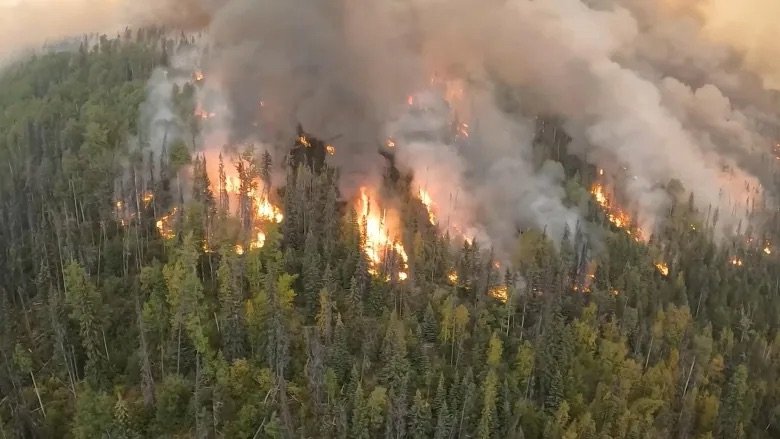2023 Sets Wildfire Records
Photo Credit: BC Wildfire Service via CBC
In 2023, British Columbia experienced its worst wildfire season in history. This season saw 2,229 wildfires, burning almost 25,000 square kilometers, according to the BC Wildfire Service. This surpasses 2018, the most severe year of wildfires prior to 2023, by more than 9,000 square kilometres. As of Oct. 12, there were 318 wildfires still active.
According to Marc-André Parisien, a research scientist in Edmonton, BC’s wildfire crisis has arrived 20 to 30 years earlier than model projections suggested.
There are multiple reasons for this increase in wildfires. Lori Daniels, a professor at the University of British Columbia in the Department of Forestry and Conservation Sciences, explained that climate change and current forest management practices have created a favourable landscape for growing fires. BC’s hot, dry, and windy conditions also promote intense, fast-spreading fires.
This surge in wildfires has cost the BC government $770 million as of Sept. 27. The total projected cost for the 2023-2024 fiscal year is $966 million, compared to $649 million spent in 2017. The BC government also stated that the costs to fight wildfires led to an added $2.5 billion to their projected deficit for the fiscal year.
"Society is already paying a huge cost for these climate change-fuelled fires,” said Daniels. “[But] the thing we can control in the short term is the vulnerability of the landscape.”
Reducing wildfire vulnerability involves changing how the landscape is managed, moving away from prioritizing conifers, and increasing prescribed burning. Since the mid-2000s, broadleaf forests have been logged for use as herbicides. However, removing them has prioritized conifers. This has increased the intensity of wildfires because coniferous forests burn more intensely. Prescribed burning is a planned, intentional fire on a specific area to enhance habitats, prepare for tree planting, or eradicate disease. These fires help prevent larger wildfires by replacing them with planned, smaller, and more frequent fires.
The Fort Nelson community in northeastern BC was hit the hardest by wildfire smoke. The nearby Donnie Creek wildfire, BC’s largest recorded wildfire, was the main reason for this. It burned nearly 6,000 square kilometres of forest — an area land that is larger than the province of Prince Edward Island. The Fort Nelson community experienced 1,054 hours of smoke from May to October, compared to the 26 hours it experienced in 2022, according to meteorologist Alyssa Charbonneau from Environment and Climate Change Canada.
“The amount of smoke this summer varied quite a bit across the province. The northeast was the hardest hit area,” Charbonneau also said. The Peace River and Prince George areas had over 70 days of air quality alerts, and the South Thompson and Okanagan area had 50 to 59 days. Due to their proximity to water, Vancouver Island and the Lower Mainland were the least affected, with five to 19 days of air quality alerts.
Dr. Emily Brigham, an assistant professor of medicine at UBC, explained that wildfire smoke happens concurrently with extreme heat, which augments concerns for asthma patients. With wildfires becoming more common, she recommended communities consider how they will protect their most vulnerable citizens. People most at risk are those with health conditions, children, infants, pregnant people, and seniors.
Potential steps of action include identifying and creating safe spaces with HEPA air filters, as well as creating community check-in services. At the household level, Brigham recommended refraining from frying or charring food and using candles during times of increased smoke, since these activities put more particulate matter into the air.
Brigham also emphasized that anyone can be affected by the smoke. Symptoms include burning eyes, a runny nose, sneezing, coughing, shortness of breath, headaches, and more. People who experience these symptoms should find somewhere to get clean air or wear an N95 respirator outdoors. As well, while the long-term effects of high levels of air pollution are yet to be determined, health problems such as strokes, heart diseases, and respiratory diseases have shown to worsen as a result of air pollution.

